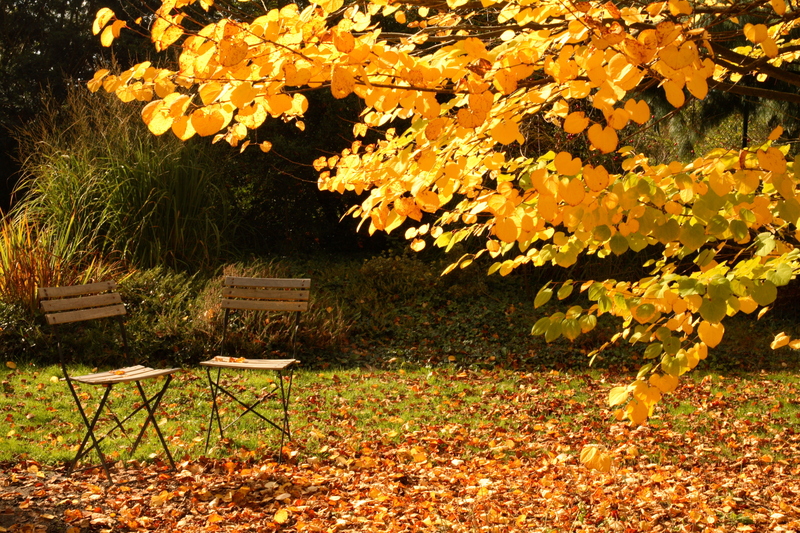Winter Wonders: Ensuring Your Garden Thrives Despite the Cold
Posted on 19/09/2025
Winter Wonders: Ensuring Your Garden Thrives Despite the Cold
When the temperatures drop and frosty mornings become the norm, many home gardeners believe their outdoor sanctuary needs to go dormant. But winter doesn't have to mean a wasted season for your green thumb. With thoughtful preparation and care, it's entirely possible to ensure your garden thrives, even in the harshest cold. This comprehensive guide dives deep into effective strategies for winter gardening, from hardy plant selections to ingenious protective tactics, turning your winter plot into a wonderland of growth and color.
Understanding Winter's Impact on Your Garden
Before implementing winter gardening techniques, it's essential to understand the unique challenges winter imposes. The combination of freezing temperatures, short days, frost, and strong winds puts stress on plants, soil, and garden structures. Proactive preparation can mean the difference between a hibernating, lifeless plot and a flourishing cold-weather oasis.
- Frost: Causes cell damage in leaves and stems, leading to wilted or dead foliage.
- Snow: Can insulate roots but also break fragile branches.
- Cold winds: Strip moisture from leaves, amplifying winter dehydration.
- Reduced sunlight: Limits photosynthesis, the energy-making process of plants.
Recognizing these challenges allows you to choose the right plants and protective measures for your winter garden to thrive despite the cold.

Choosing Hardy Plants for Winter Gardening
One of the keys to a thriving garden during winter is plant selection. Certain plants naturally resist the chill, bringing life and color to your landscape. Consider incorporating these winter-hardy species into your garden:
Top Winter-Resistant Perennials
- Hellebores (Christmas Rose): Blooms even in snow, with elegant, nodding flowers.
- Snowdrops: Among the earliest bloomers, they pierce through snow with delicate white petals.
- Winter Jasmine: Produces cheerful yellow flowers throughout winter.
- Heathers: Add vibrant color and texture to garden beds and borders.
- Evergreen shrubs (e.g., Boxwood, Holly, or Mahonia): Maintains greenery and structure year-round.
Best Edible Crops to Grow in Winter
- Kale: Sweetens after a frost and withstands cold well.
- Brussels sprouts: Use snow as natural mulch for fuller flavor.
- Spinach: Hardy varieties continue growing beneath row covers.
- Carrots and parsnips: Their roots continue to develop sweetness underground.
- Leeks: Stand tall even under snow, ready to harvest throughout the winter.
Tip: Don't forget about ornamental grasses and winter-blooming bulbs; these add movement and interest to an otherwise dormant winter landscape.
Preparing Your Garden for Winter Success
Preparation is the cornerstone of a thriving winter garden. Invest time in late autumn to ready your beds, borders, and containers for the months ahead. Here's how:
1. Clean Up and Mulch
- Remove dead annuals and diseased plant material to prevent pests.
- Apply a thick 2-4 inch layer of organic mulch (straw, wood chips, shredded leaves) to insulate plant roots and suppress weeds.
2. Protect Vulnerable Plants
- Wrap tender shrubs with burlap to guard against windburn and temperature swings.
- Use frost cloths or cloches to shield delicate crops overnight.
- Bring potted plants indoors or move them to sheltered spots.
3. Prep Your Soil
- Add well-rotted compost to replenish nutrients depleted over the growing season.
- Consider planting cover crops (e.g., winter rye or clover) to protect and enrich soil during the off-season.
Protection Techniques: Shielding Your Garden from the Cold
Your garden can not only survive but thrive despite the cold with these effective protective strategies:
Cold Frames and Greenhouses
Cold frames--simple, bottomless boxes topped with glass or clear plastic--offer extra warmth and protection to give your winter vegetables and seedlings a head start. A greenhouse, even a small hoop house, extends your growing season and lets you experiment with less-hardy varieties.
- Monitor temperatures and ventilate on sunny days to prevent overheating.
- Use thermal mass (like water barrels or stones) to store daytime heat for nighttime release.
Mulching and Ground Covers
A thick layer of mulch conserves moisture, keeps roots insulated, and prevents erosion from harsh winter rains and winds. For added protection:
- Layer straw, pine needles, or leaves around perennials and root crops.
- Use evergreen boughs as a natural mulch over sensitive flower beds.
Row Covers and Cloches
- Floating row covers of fleece or light fabric reduce frost damage for brassicas, lettuces, and root vegetables.
- Individual cloches (recycled plastic bottles work in a pinch) protect vulnerable seedlings.
Watering Wisely in Winter
Don't let the cold fool you: your garden still needs water! Plants dehydrate just as easily in dry winter winds and low humidity as they do during summer heat. To ensure your winter garden thrives despite the chill:
- Water early in the day so plants absorb moisture before overnight freezing.
- Avoid overwatering--soggy soil can rot roots in cold weather.
- Focus on the root zone rather than the foliage.
Pro Tip: Rain barrels can be used safely until hard freezes arrive to keep your watering eco-friendly.
Pruning and Maintenance for Winter Health
Pruning during the dormant season, for many plants, is ideal to shape, invigorate, and protect them from winter stress.
- Remove dead or damaged wood to prevent breakage under snow or ice.
- Thin crowded branches on trees and shrubs for better air circulation and light penetration (once the coldest part of winter has passed).
- Wait to prune spring-flowering shrubs until after their bloom for the best display.
Encouraging Winter Wildlife for a Thriving Ecosystem
A thriving garden is teeming with life, even in winter. Beneficial wildlife can help maintain a healthy, pest-free environment and ensure your garden's long-term vitality.
How to Attract and Support Wildlife
- Birdfeeders: Provide energy-rich seed mixes and suet to attract songbirds.
- Water sources: Cold-hardy birdbaths or heated dishes ensure birds have access to liquid water.
- Leave some seed heads and ornamental grasses: These provide food and shelter.
- Brush piles: Offer winter protection for beneficial insects and small mammals.
Remember: A balanced ecosystem in winter paves the way for a robust garden come spring.
Winter Gardening Projects for Ongoing Interest
Winter is not just for waiting and watching--it's an opportunity for creative seasonal gardening projects. Keep your outdoor (and indoor!) spaces lively, useful, and beautiful with:
- Creating festive winter container displays with evergreens, berries, and colorful twigs.
- Forcing bulbs indoors (tulips, hyacinths, paperwhites) for early spring color.
- Building or repairing raised beds and cold frames for the upcoming season.
- Planning next season's crops and ordering seeds--heralding the return of warmth!
Common Winter Gardening Mistakes to Avoid
Even the most enthusiastic gardener can make missteps that compromise winter garden health. Be sure to avoid these pitfalls:
- Neglecting to mulch: Roots left exposed are more susceptible to severe temperature swings and frost damage.
- Over-fertilizing: Most plants are dormant; excess nutrients can cause stress or encourage untimely, frost-vulnerable growth.
- Forgetting about drainage: Frozen, waterlogged soil kills roots. Ensure beds are well-drained before frost arrives.
- Ignoring wildlife: Leaving garden beds too tidy deprives beneficial creatures of winter shelter and food.

Planning Ahead: Prepare Now for Spring Success
Winter doesn't just present challenges; it offers unique advantages for gardeners with foresight. Use these colder months to:
- Test and amend your soil for nutrient deficiencies and texture.
- Sharpen and clean garden tools--ready for spring's rush.
- Map out next year's garden plan, rotating crops and designing new borders.
- Attend local gardening workshops or explore winter-blooming plant options at nurseries.
Conclusion: Embrace the Wonders of Winter Gardening
Winter gardening is not just possible--it's rewarding and magical. Armed with the right knowledge, preparation, and commitment, every gardener can enjoy a thriving, resilient, and beautiful outdoor space even as the mercury drops. From selecting frost-tolerant blooms to implementing sensible protection methods, watering wisely, and nurturing wildlife, your garden will withstand challenges and amaze with unexpected beauty. Let your garden's winter wonders inspire you through the cold months and give you a head start on spring's joyful burst of growth.
Remember: a winter-ready garden isn't just the secret to surviving the cold--it's the foundation for year-round gardening success. Plan ahead, experiment, and discover how your garden can truly thrive despite the winter chill.
Further Resources
- RHS Winter Gardening Advice
- Winter Gardening Tips - Gardener's Supply
- The Old Farmer's Almanac: Winter Garden Planning
Seize the season--let your winter garden thrive, showcasing its wonders despite the cold!

